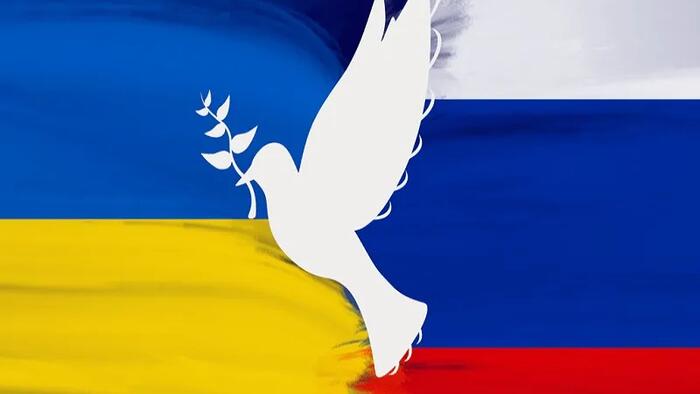In the context of the ongoing Ukrainian conflict, Andrew Korybko posits that President Vladimir Putin might consider freezing hostilities along the Line of Contact (LOC) if former President Donald Trump, during his anticipated re-election campaign, threatens to escalate U.S. military support for Ukraine. Although Trump’s assertion that he can resolve the conflict within 24 hours seems implausible, he is likely to propose a peace plan that could involve a cessation of military operations without necessitating significant territorial changes. Given the current dynamics, Russia may find itself unable to exert control over contested areas or completely remove Ukrainian forces from the Donbas, which remains central to its territorial claims. The notion of a strong U.S. military response, potentially through NATO, looms if Russia makes aggressive moves, further complicating the path to negotiation.
Trump’s approach, designed to leverage his combative negotiation style, could involve pushing for a conflict freeze while maintaining territorial assertions, a strategy likely to provoke mixed reactions from both Russia and Ukraine. Indeed, Trump could prioritize the freezing of hostilities without requiring Ukraine to relinquish control over the territories claimed by Russia. This scenario might unfold, as his advisors purportedly suggested in the summer, with the former president seeking to align Russia’s compliance with his demands lest he escalate military backing for Ukraine. Putin’s pragmatic nature suggests he may acquiesce to a temporary cessation, but he could simultaneously pressure Trump to extract concessions from Ukrainian leadership, such as legislative adjustments regarding NATO membership and arms shipments.
The concessions desired by Russia would likely include a halt to legislation pertaining to NATO membership and a decrease in arms supplies to Ukraine. However, the realities of the political landscape in the U.S. may render certain requests impracticable. The military and diplomatic establishment in Washington is historically resistant to any actions perceived as concessions to Russia, which could hinder Trump’s plans if he seeks to rally bipartisan support. Another explosive issue is the so-called denazification of Ukraine, a term that carries significant weight in Russian rhetoric but has not found support among U.S. policymakers. While Trump might not formally agree to halt arms shipments due to existing commitments and growing geopolitical priorities in Asia, natural shifts in military focus may still occur as he redirects resources chiefly towards containing China.
Exploring the broader implications of sanctions and economic stability, Korybko notes that Russia has thus far navigated Western sanctions better than expected, though its ambitions to forge alternative economic relations through non-Western alliances have met with varying degrees of success. The failure of initiatives at the recent BRICS Summit and the complicated relationship with China underscore the fragility of Russia’s strategic pivots away from reliance on the West. Consequently, Moscow might be particularly receptive to Trump’s proposed phased sanctions relief, as such a maneuver could symbolize a potential thaw in hostile relations, even as legislative hurdles complicate immediate implementation.
Should Trump consider a sanctions relief strategy as an incentive for Putin to agree to a ceasefire, the logistics of such a plan would be laden with complications. Many sanctions are entrenched in U.S. law, requiring significant legislative backing for alteration or removal. Furthermore, the European Union’s stance on sanctions is intertwined with that of the U.S., and could pose additional challenges should they remain opposed to easing restrictions. The maneuvering involved in such a scenario would have to be carefully crafted to assure U.S. hardliners that they are not yielding to Russian demands, a difficult balance considering the historical context of U.S. foreign policy toward Russia.
As the situation develops, neither Russia nor the U.S. appears inclined toward further escalation, suggesting that both countries might seek to conclude the prolonged conflict in order to pivot to other pressing strategic concerns. Trump’s prospective proposal, while not expected to incite dramatic shifts, could facilitate a “face-saving” avenue for both sides to lower tensions and strive towards mitigating hostilities. Korybko implies that a shift in narrative is inevitable, driven by each side’s need for political cover as they explore pathways toward compromise, despite their precise demands and circumstances remaining conflicting.
Ultimately, while unexpected developments could alter the anticipated trajectory of U.S.-Russia relations, Korybko’s analysis presents a scenario where mutual fatigue with the conflict leads to a reevaluation of positions from both sides. An underlying consensus on the need for compromise may emerge from either side’s hawks urging a more confrontational stance. Consequently, as Trump maneuvers through this complex geopolitical landscape, a significant shift in rhetoric or approach from the Kremlin could signal a readiness to accept a diplomatic resolution that, while potentially disappointing to hardliners, allows for a reduction of tensions and an opportunity for both nations to address more pressing global challenges.

